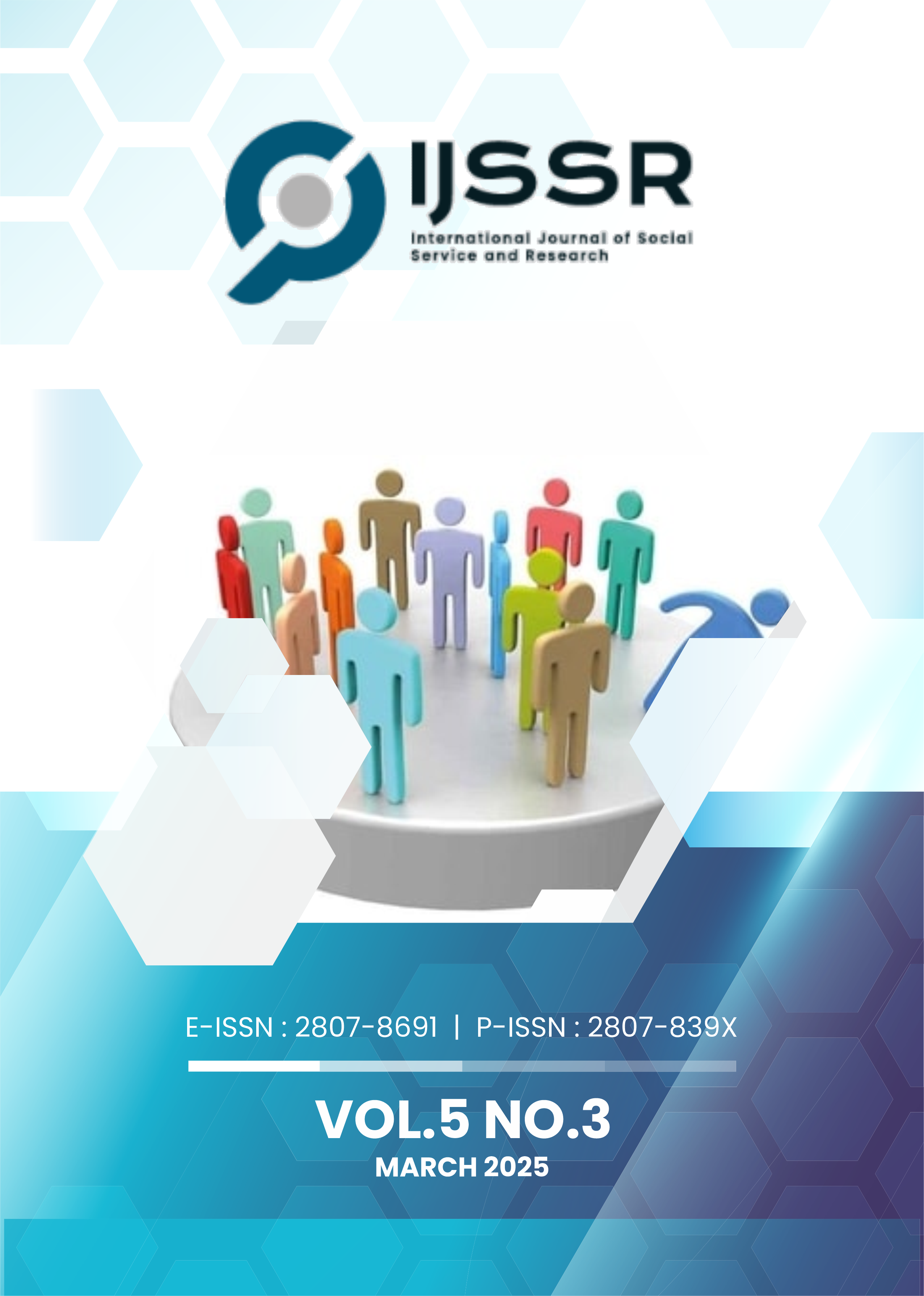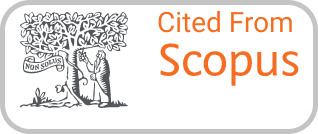EVALUATION OF THE LIMPAKUWUS PINE FOREST NATURAL TOURISM DEVELOPMENT PROGRAM IN BANYUMAS REGENCY
DOI:
https://doi.org/10.46799/ijssr.v5i3.1211Keywords:
CIPP Model, context evaluation, input evaluation, process evaluation, program evaluationAbstract
This study aims to evaluate whether the tourism program, implemented by Perum Perhutani/PT, is effective in enhancing economic opportunities and quality of life for residents. The study uses the CIPP (Context, Input, Process, Product) evaluation model, by analyzing primary data from natural tourism managers both by interviews and observations and secondary data (document collection) obtained from related agencies. The results of the research on environmental issues, legal frameworks, technical guidelines, funding sources, and the overall effectiveness of the program have provided added value for both parties. The conclusion from the study is that the cooperation program for the management of natural tourism objects in the Limpakuwus Pine Forest implemented by PT Palawi Risorsis with the LMDH has provided additional value for the two parties. This study provides a comprehensive analysis that complements existing literature while addressing its limitations.
References
Alamineh, G. A., Hussein, J. W., Mulu, Y. E., & Taddesse, B. (2023). The negative cultural impact of tourism and its implication on sustainable development in Amhara Regional State. Cogent Arts and Humanities, 10(1). https://doi.org/10.1080/23311983.2023.2224597
Aziz, S., Mahmood, M., & Rehman, Z. (2018). Implementation of CIPP Model for Quality Evaluation at School Level: A Case Study. Journal of Education and Educational Development, 5(1). https://doi.org/10.22555/joeed.v5i1.1553
Baloch, Q. B., Shah, S. N., Iqbal, N., Sheeraz, M., Asadullah, M., Mahar, S., & Khan, A. U. (2023). Impact of tourism development upon environmental sustainability: a suggested framework for sustainable ecotourism. Environmental Science and Pollution Research, 30(3). https://doi.org/10.1007/s11356-022-22496-w
Dangi, T. B., & Petrick, J. F. (2021). Augmenting the Role of Tourism Governance in Addressing Destination Justice, Ethics, and Equity for Sustainable Community-Based Tourism. Tourism and Hospitality, 2(1). https://doi.org/10.3390/tourhosp2010002
Das, G., Ekka, B., Aarif, M., Alalmai, A., & Ekka, B. (2023). Unveiling the Significance of Sustainability in Tourism: Environmental Conservation, Socioeconomic Development, and Destination Resilience "Unveiling the Significance of Sustainability in Tourism: Environmental Conservation, Socioeconomic Development, and Destination Resilience. Rivista Italiana Di Filosofia Analitica Junior, 14(1).
Dizon, A. G. (2023). Historical development of CIPP as a curriculum evaluation model. History of Education, 52(1). https://doi.org/10.1080/0046760X.2022.2098390
Hariram, N. P., Mekha, K. B., Suganthan, V., & Sudhakar, K. (2023). Sustainalism: An Integrated Socio-Economic-Environmental Model to Address Sustainable Development and Sustainability. Sustainability (Switzerland), 15(13). https://doi.org/10.3390/su151310682
Khater, M., Ibrahim, O., Sayed, M. N. E., & Faik, M. (2024). Legal frameworks for sustainable tourism: balancing environmental conservation and economic development. Current Issues in Tourism, 1–22. https://doi.org/10.1080/13683500.2024.2404181
Kirkpatrick, J., & Kirkpatrick, W. (2019). An Introduction to the New World Kirkpatrick Model. Krikpatrick Partners, 1–13.
Lenzen, M., Sun, Y. Y., Faturay, F., Ting, Y. P., Geschke, A., & Malik, A. (2018). The carbon footprint of global tourism. Nature Climate Change, 8(6). https://doi.org/10.1038/s41558-018-0141-x
Mejjad, N., Rossi, A., & Pavel, A. B. (2022). The coastal tourism industry in the Mediterranean: A critical review of the socio-economic and environmental pressures & impacts. Tourism Management Perspectives, 44. https://doi.org/10.1016/j.tmp.2022.101007
Miles, M. B., & Huberman, M. A. (2012). Analisis Data Kualitatif: Buku Sumber Tentang Metode-Metode Baru. In Universitas Indonesia_UI Press.
Morea, J. P. (2021). Environmental justice, well-being and sustainable tourism in protected area management. Journal of Ecotourism, 20(3). https://doi.org/10.1080/14724049.2021.1876072
Nurandini, S., & Triyono, A. (2024). Analysis of Instagram Social Media Management in @Hutanpinuslimpakuwuss Account on the Development of Limpakuwus Forest Tourism Object. Jogjakarta Communication Conference (JCC), 2(1), 70–75.
Prianti, D. M., & Priyanto, P. (2022). ANALISIS KEPUASAN WISATAWAN TERHADAP HUTAN PINUS LIMPAKUWUS KAWASAN WISATA BATURADEN KABUPATEN BANYUMAS. Media Bahasa, Sastra, Dan Budaya Wahana, 28(2), 685–693.
Stufflebeam, D. L., & Shinkfield, A. J. (1985). Systematic Evaluation: A Self-Instructional Guide to Theory and Practice. Kluwer-Nijhoff Publishing.
Stufflebeam, D. L., & Zhang, G. (2017). The CIPP Evaluation Model: How to Evaluate for Improvement and Accountability. Guilford Publications. https://books.google.co.id/books?id=Y1LgDQAAQBAJ
UNWTO. (2020). International Tourism Highlights. UNWTO.
UNWTO. (2021). Impact of COVID-19 on Global Tourism. UNWTO.
Utami, A., Iqbal, A., & Rahab, R. (2023). Analisis Potensi Dan Daya Tarik Objek Wisata serta Persepsi Wisatawan terhadap Kondisi Wisata Alam Hutan Pinus Limpakuwus, Kabupaten Banyumas. Jurnal Pengelolaan Sumberdaya Alam Dan Lingkungan (Journal of Natural Resources and Environmental Management), 13(1). https://doi.org/10.29244/jpsl.13.1.11-26
Zhang, G., Zeller, N., Griffith, R., Metcalf, D., Williams, J., Shea, C., & Misulis, K. (2011). Using the Context, Input, Process, and Product Evaluation Model (CIPP) as a Comprehensive Framework to Guide the Planning, Implementation, and Assessment of Service-learning Programs. Journal of Higher Education Outreach and Engagement, 15(4).
Downloads
Published
Issue
Section
License
Copyright (c) 2025 Iid Rohid, Rita Retnowati, Yossa Istiadi

This work is licensed under a Creative Commons Attribution-ShareAlike 4.0 International License.
Authors who publish with this journal agree to the following terms:
- Authors retain copyright and grant the journal right of first publication with the work simultaneously licensed under a Creative Commons Attribution-ShareAlike 4.0 International. that allows others to share the work with an acknowledgement of the work's authorship and initial publication in this journal.
- Authors are able to enter into separate, additional contractual arrangements for the non-exclusive distribution of the journal's published version of the work (e.g., post it to an institutional repository or publish it in a book), with an acknowledgement of its initial publication in this journal.
- Authors are permitted and encouraged to post their work online (e.g., in institutional repositories or on their website) prior to and during the submission process, as it can lead to productive exchanges, as well as earlier and greater citation of published work.













